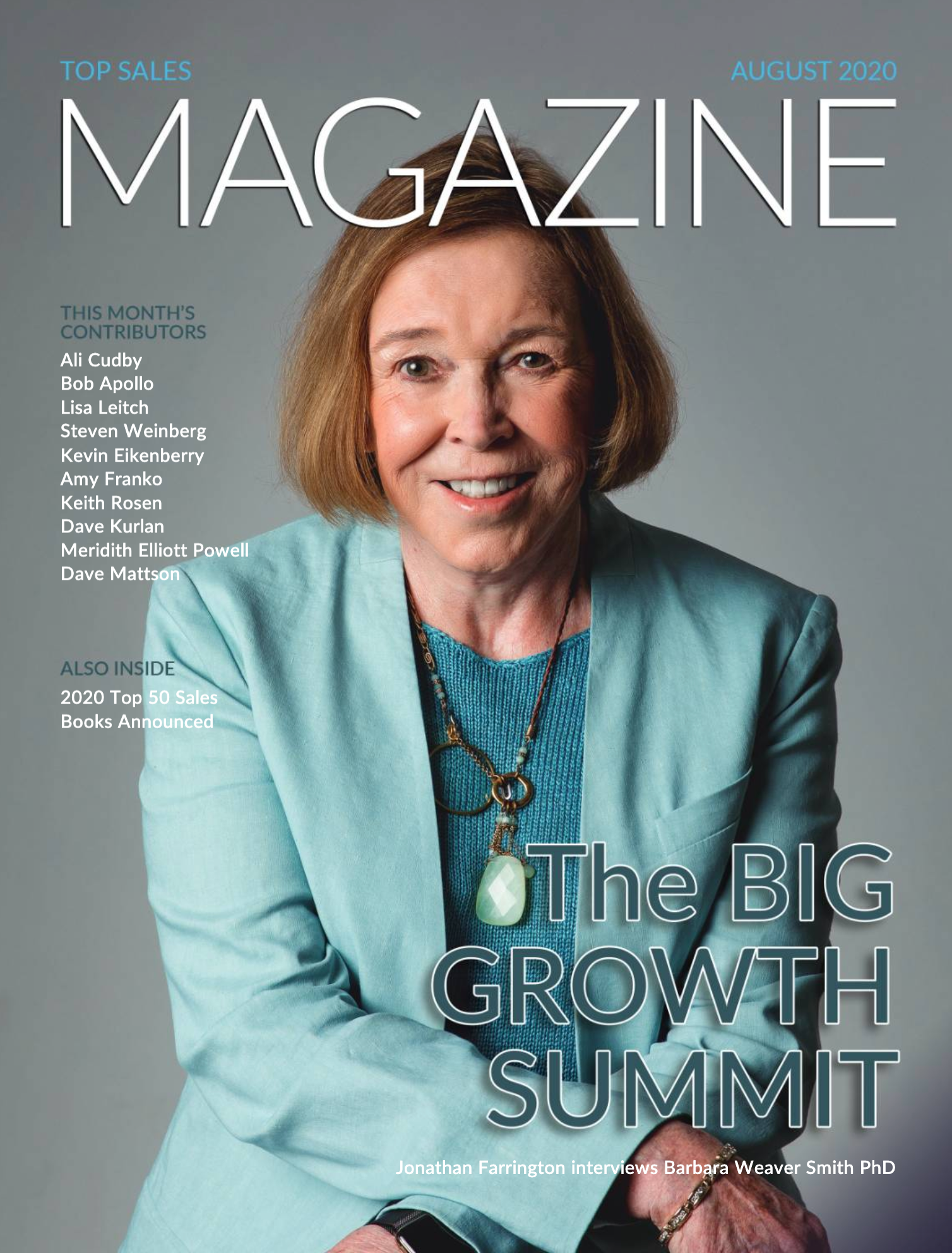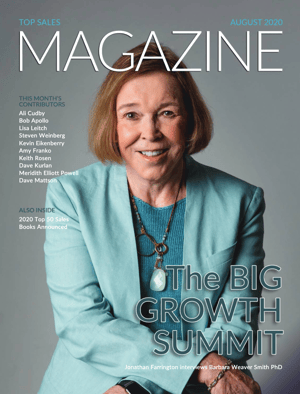The status quo isn’t what it used to be…
August 6, 2020

 Whenever a purchase is inevitable (the customer must act) your competition tends to be predictable - and it will often be another vendor like you. But - as is so often the case in complex B2B sales - the purchase is discretionary (the customer may or may not decide to act) - your fiercest competitor is often the status quo.
Whenever a purchase is inevitable (the customer must act) your competition tends to be predictable - and it will often be another vendor like you. But - as is so often the case in complex B2B sales - the purchase is discretionary (the customer may or may not decide to act) - your fiercest competitor is often the status quo.
This was true even before Covid affected our economy. It is even more true now. It will continue to be important in the future. But the status quo isn’t what it used to be.
Preserving the status quo involves doing nothing and sticking with what is familiar rather than venturing into the unknown. It has often been seen by customers as their least-risk option, particularly if there was any significant uncertainty about whether any proposed changes were likely to have a positive impact.
But your customer’s world has changed and for many the old certainties and uncertainties will no longer apply. Battening down the hatches until they can revert to the “old normal” - far from being the safe approach - may now be a risky strategy. For many, change is inevitable...
The more enlightened amongst your customers will already have recognised this. They may have concluded that changes that they could previously afford to defer until some future date now need to be accelerated. Their priorities have shifted - and how you qualify sales opportunities needs to shift as well.
Why change?
Let’s firstly acknowledge the three reasons why customers agree to implement change programmes: to fix a problem, to avoid a risk, or to achieve an opportunity. Any proposed project needs to address at least one of these, and the identified problem, risk or opportunity needs to be significant enough to justify action. But that by itself is not enough in the current climate…
The three critical criteria
The change projects that are being prioritised by your customers now are the ones that satisfy three critical criteria: they must be strategically relevant, tactically urgent and offer rapid time-to-payback. Let’s examine each of these criteria in more detail:
Strategically relevant
The purchases that are being most easily approved today are the ones that have a direct or strong indirect connection to your customer’s high-priority corporate initiatives. This means that your salespeople need to establish the strongest possible (and preferably indispensable) connection between your proposed “solution” and the customer’s most important current priorities.
If you fail to establish this clear connection, your project may still be approved, but it may take longer and require more effort to achieve.
Tactically urgent
As well as being strategically relevant, purchases need to be seen by the customer as tactically urgent. This means that any delay in their decision-making or implementation will mean that it will take longer to achieve their desired outcomes (and may even put those outcomes at risk). You need to help your customer to recognise the full costs and consequences of inaction.
If you fail to maximise the perceived costs and consequences of inaction or delay, the project may still go ahead, but it is likely to take longer to get their commitment than it needed to.
Rapid time-to-value
The third critical factor is that any proposed solution must be able to demonstrate rapid time-to-value. Multi-year projects that only deliver meaningful benefits in a distant and uncertain future are far less likely to be approved than projects that can demonstrate rapid initial time-to-value which is then (for larger and longer projects) compounded as each phase of the initiative delivers additional incremental benefits.
This requires a high level of customer confidence in both the need for the project and in your proposed solution’s proven ability to deliver the expected outcomes on-time and within budget. The stronger the evidence you can provide, the more likely it is that the customer will approve the project now rather than later.
Different problems, different risks and different opportunities
Your customers are facing a different set of problems, risks and opportunities compared to the start of the year. Their priorities have changed. Their certainties have been challenged. Their status quo isn’t what it used to be. And their new normal is probably going to be significantly different from their old normal.
Your sales organisation needs to see this as an opportunity. You need to reassess your priorities. You need to identify the common widespread issues that you are best-in-class at solving, the characteristics of the organisations that are most likely to suffer from them, the change agents within these potential customers who are most likely to be driving new initiatives, and the specific triggers (other than Covid) that are likely to be driving their need for change.
These may be different from the ones that prevailed at the start of the year. The issues may be different, your ideal customers may be different, the change agents may be different and the specific triggers that drive urgent change may be different. The definitions of strategic relevance, tactical urgency and time-to-value may have changed.
Hope should never be a strategy
Hopefully, you will have already recognised this, and acted. Hopefully, your messages, priorities and targets will have changed. Hopefully, your salespeople’s behaviour will have changed. But as we all know, hope is not a strategy. Whenever our customers circumstances change, we need to pivot to help them achieve their newly revised desired outcomes. We need to help them to recognise what is now possible.
For both our customers and ourselves, the status quo isn’t what it used to be. For both our customers and ourselves, our pre-covid trajectories are unlikely to help us to maximise our future success. Both we and our customers have been exposed to an unanticipated shock to the system.
How we respond - and how we choose to help our customers respond - will lay the foundations for our future success or failure. It’s up to us.
This article was originally published in the August 2020 edition of Top Sales Magazine - you can subscribe here.
If you'd like to discuss any of the implications of this article for your own sales organisation, you can book a call here.
ABOUT THE AUTHOR
 Bob Apollo is a Fellow of the Association of Professional Sales, a founding contributor to the International Journal of Sales Transformation, an active member of the Sales Experts Channel and the Sales Enablement Society, and the driving force behind Inflexion-Point Strategy Partners, the leading proponents of outcome-centric selling.
Bob Apollo is a Fellow of the Association of Professional Sales, a founding contributor to the International Journal of Sales Transformation, an active member of the Sales Experts Channel and the Sales Enablement Society, and the driving force behind Inflexion-Point Strategy Partners, the leading proponents of outcome-centric selling.
Following a successful corporate career spanning start-ups, scale-ups and market leaders, Bob now works as a strategic advisor, mentor, trainer and coach to ambitious B2B sales organisations - teaching them how to differentiate themselves through their provably superior approach to achieving their customer's desired outcomes.


Comments